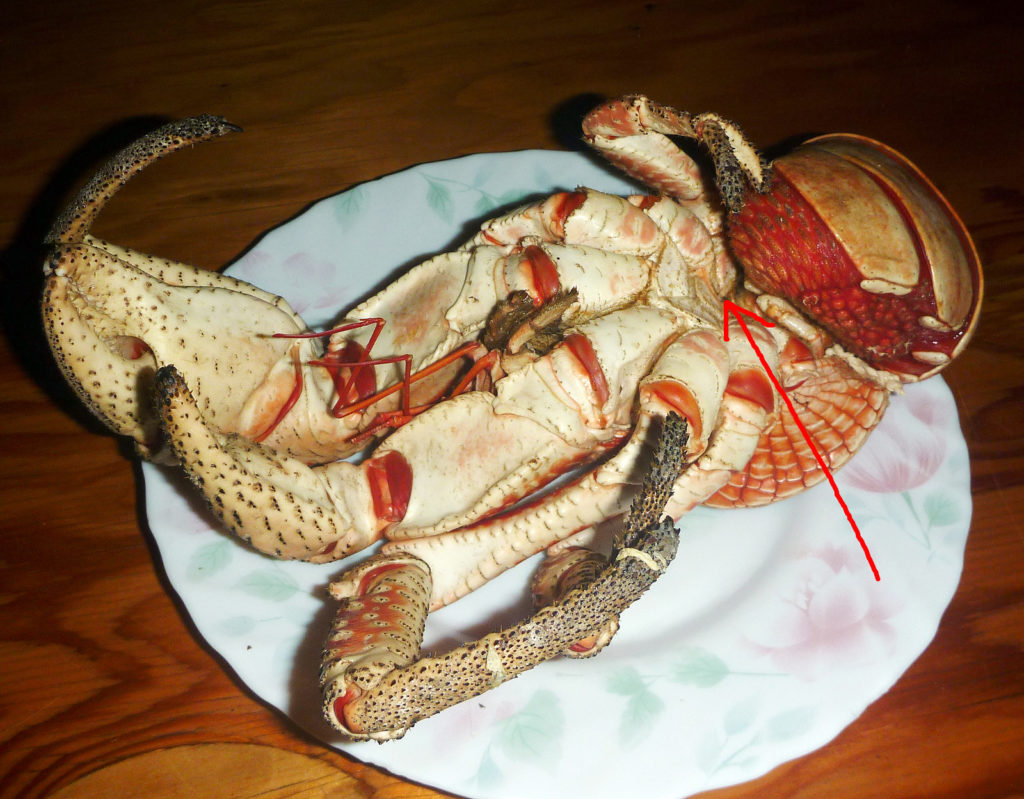As many marine species the crabs have also become very popular in the worldwide gastronomy. However, it is important to know that there are also poisonous crabs of whom we talk following.
Table Of Content
Main Types Of Poisonous Crabs
Family Xanthidae
This family is comprised by 572 species in 133 genera, which makes of it the biggest crabs’ family in the world. They are also known as mud crabs, and they are characterized by their bright colors. Some species of this family, which is mainly spread throughout the coasts of Australia, contain toxins that are not always destroyed when the crab is cooked.
Saxitoxin and tretrodotoxin are the two toxins contained in these crabs, which could be even lethal for humans. Since crabs don´t produce toxins by themselves, the symbiotic relationships that they maintain with some bacteria, is probably the main reason of this fact. Since Crabs have no mechanism for delivering these toxins, poisoning only occurs when people consume them. So, if you are not totally sure about what kind of crab you are just about to eat; the best recommendation is to not eat it.
Mosaic reef crab (Lophozozymus pictor)
This red species of crab which also belongs to the Xanthidae family, is commonly seen among coral rubble or near living reefs.
They have an elongated fan shaped body of red color, with striking mosaic patterns with large white spots, which gives it its particular common name. They also have black tips in their pincers that distinguish them among the poisonous crabs. It is believed that they acquire their toxins from the species they feed on such as sea cucumbers.
According to different studies the toxins of this crab is mainly concentrated in the gut and the hepatopancreas, and when they remain in captivity they lose their toxins in less than one month, which supports the theory that they obtain such substances from other species..
Emerald Crabs (Mithraculus Sculptus)
This is a poisonous saltwater invertebrate crabs, whose main food is bubble algae. They are of a beautiful emerald color, but as we already know, colorful crabs are usually the most lethal.
They are small crabs which reach five centimeters in diameter when most. Their diet consists of poisonous snails, coral algae, red algae embedded in the living rock, and some crustaceans like the yeti crab.
The Mithrax sculptus are one of the most popular marine crab species for domestic aquariums, since they are voracious algae-eaters, which makes of them quite useful for clean-up crews.
Let´s learn more about them
Floral Egg Crab (atergatis floridus,)
This is a typical species of the Indo Pacific Ocean that is also quite poisonous. The floral egg crab has such a toxic meat that, even after being cooked, its consumption could be lethal. It is characterized by an oval and relatively narrow shell, which has a smooth surface with soft margins. It has large spoon-shaped pincers, which end in its characteristic black tips. The shell of the floral egg crab is twice as wide as it is long, and its flesh is highly toxic, which is why many scientists have compared it in toxicity with puffer fish.
Summary
As a conclusion, you must always be sure about the species of crab you are going to eat, since there are not proven treatments against the toxins they contain. In the case of poisoning with saxitoxin or tretrodotoxin the best option is to emptying the stomach, feeding the victim with activated coal to bind the toxin, and taking standard life-support measures to keep the victim alive until the effect of the poison has worn off.
They taste delicious… but select well….





